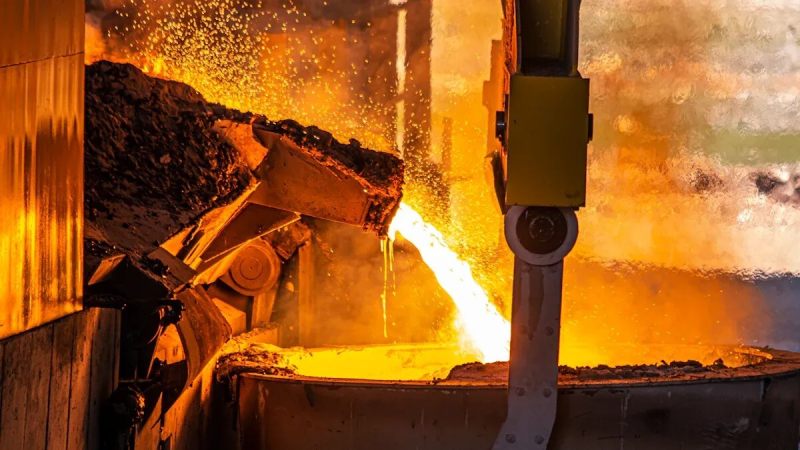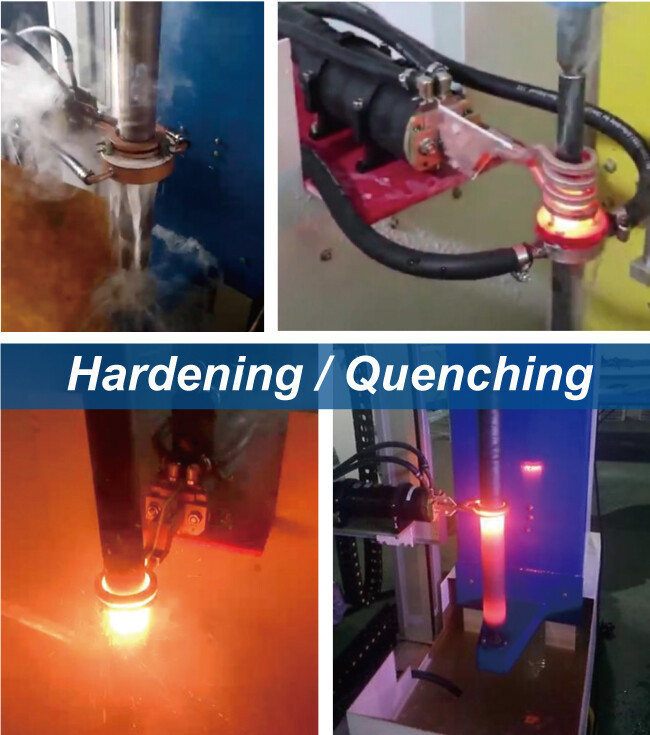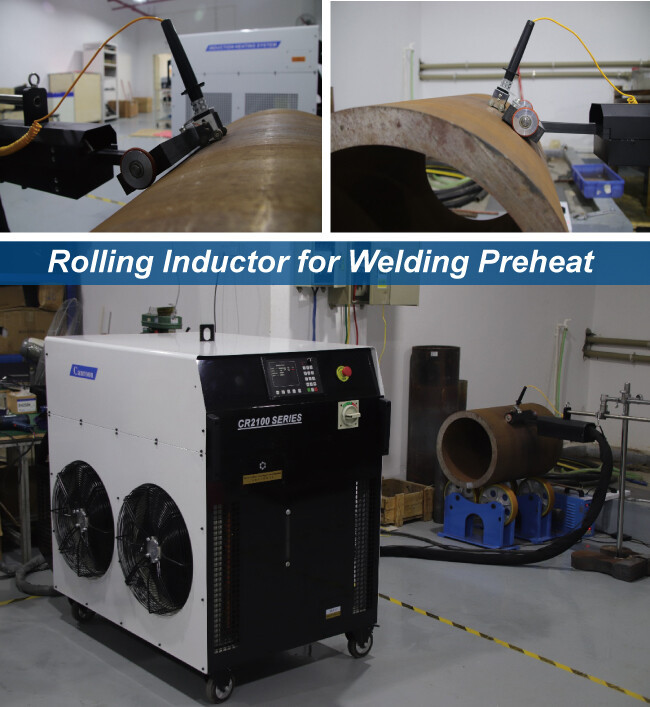

Choosing the right industrial induction heater can make your facility safer and more efficient. Using the right equipment for your job gives better results. Induction heating moves energy better, up to 84%. It uses 30% less energy and makes things 20% faster than gas burners:
Picking the right heater can seem hard. Canroon’s experts can help you choose the best industrial induction heater.
Key Takeaways
Picking the right industrial induction heater helps keep your workplace safe. It also makes work faster. Think about what you need for your job. Look at the kind of heating you want. Check what materials you will use. Choose a heater that fits your space. Make sure it is easy to move if needed. Match the heater’s power to your job. Pick the right frequency for good heating. Talk to experts for advice. They can help you find the best equipment for your needs.
Key Considerations for Industrial Induction Heater Selection
When you pick an industrial induction heater, you should think about a few important things. These things change how well the heater works for your job. Canroon’s team helps you learn about these details so you can choose the best one.
Application Requirements
Start by thinking about what you need the heater to do. Industrial induction heating is used in many ways in factories. Some common uses are:
Preheating before welding
Post-weld heat treatment
Localized heating for bending or shaping
Induction hardening of metal parts like gears, shafts, and bearings
Each job needs a different way to heat. Preheating before welding needs wide, even heat. Hardening a gear needs deep, focused heat. You should also think about the part’s material, how deep you want the heat, the temperature you need, and the coil’s design. The right induction heating equipment fits all these needs for the best results.
Tip: Write down your main job and any special needs before you look at heaters.
Material Type
The material you want to heat changes how induction heating works. Different materials react in different ways to induction heating. Here is a table to help you compare:
Copper gives strong, even heat and lasts a long time.
Aluminum costs less and weighs less, but you may need a bigger coil.
Litz wire works best for high-frequency jobs and helps save energy.
You should match the material to your job for the best results.
Size and Portability
Think about where you will use the induction heating equipment. Some jobs are done in a factory, and some are done outside. The size and portability of the heater are important. Here is a quick comparison:
If you work in one place and need lots of power, a stationary heater is best. If you move around, a portable heater saves time and effort.
Power and Frequency
Power and frequency change how well your induction heater works. Frequency controls how deep the heat goes and how energy spreads in the part. High frequency heats the surface. Low frequency heats deeper. You should also think about the skin effect, which keeps heat near the surface, and the edge effect, which can make heat uneven.
The right frequency gives you the best heat for your job.
Power density changes with frequency, so you get different results for things like gear hardening or surface treatment.
You should match the power and frequency to your job to get the best results from your industrial induction heating system.
Cooling Systems
Cooling systems keep your induction heating equipment safe and working well. If the heater gets too hot, it can wear out faster and use more energy. Good cooling systems save energy and help you melt metal faster with less power. Closed cooling systems, like those using distilled water, keep dirt out and help the system run smoothly. For small coils, water cooling works best, and sometimes you need a booster pump to keep the water moving.
Cooling protects both metal parts and electrical parts from heat.
Efficient cooling lowers your costs and keeps your heater running longer.
Note: Canroon’s experts help you pick the right coil shape and size for your job. They know how to match the shape of your part to the best induction solution.
By looking at these key things—application, material, size, power, frequency, and cooling—you can pick the right industrial induction heater for your needs. Canroon’s team can help you with each step, making sure your choice fits your job and gives you the best results.
What Is Industrial Induction Heating?

How It Works
Industrial induction heating warms up metal parts without touching them. It uses electromagnetic induction to do this. When you put a metal part inside a coil, the coil gets an alternating current. This current makes a magnetic field around the coil. The magnetic field creates eddy currents inside the metal part. These eddy currents heat the metal from the inside out.
Induction heating is different because it heats the part itself. Other ways, like gas burners, heat the air or the outside first. Induction is faster and gives more exact heating. You can control the temperature very well, so you do not overheat or harm your parts. This safe, non-contact way also keeps your workspace safer.
Tip: Induction heating works best with conductive materials like steel, copper, and aluminum.
Benefits for Industrial Applications
Industrial induction heating has many good points for factories and other jobs. It saves energy and gives you more control over your work. Here are some main benefits:
You can heat parts much faster than with old methods.
Induction heating uses less energy, so you save money and help the planet.
You can put the heat right where you need it, so you do not waste energy.
The process gives even heating, which makes your products stronger and better.
Non-contact heating means no open flames, so it is safer.
Here is a table that shows how induction heating compares to traditional heating:
You can see that an industrial induction heater gives you more control and better results. You can use induction heating for many jobs, like hardening, brazing, or melting metals. This technology helps you make your work faster, safer, and more dependable.
Types of Industrial Induction Heaters
When you look for an industrial induction heater, you will find different types. Each type is good for certain jobs in factories and other places. If you learn about what each one does, you can pick the best one for your work.
High-Frequency Heaters
High-frequency induction heaters use frequencies from 60 kHz to 200 kHz. These heaters are great for jobs that need fast and careful heating. They work well for surface treatments, brazing, and heating small parts. You get quick heating and a clean process with no smoke or fire. These heaters let you control the heat very well, so your products stay strong and do not bend. They can cost more and need skilled people to use them. High-frequency heaters work best with materials that carry electricity.
Tip: High-frequency heaters are good for surface hardening, heating small parts, and brazing.
Medium-Frequency Heaters
Medium-frequency induction heaters use frequencies from 1 kHz to 10 kHz. These heaters are good for heating deeper inside the metal. They work well for bigger parts and jobs like tempering, annealing, and forging. You get even heat all over the part, which helps make it strong. Medium-frequency heaters are good for making many parts at once.
Low-Frequency Heaters
Low-frequency induction heaters give the deepest heat. You can use them for hardening all the way through, forging steel rods, and melting metal. These heaters are good for big parts and tough jobs. You might use them before welding or for heating metals that are not iron.
Heats deep for full hardening
Good for forging steel rods
Used for tempering pressing dies
Pre-heats before welding
Heats gears, rings, and bearings
Typical Industrial Applications
You can pick from handheld heaters, medium-sized systems, and big automatic systems. Each one is best for different jobs:
You can choose the right heater by looking at the material, power, frequency, coil shape, cooling, and controls. Induction heating experts can help you find the best system for your factory.
Considerations for Choosing Induction Heating Equipment
When you pick induction heating equipment, you want it to fit your needs. It should give you good quality, control, and safety. It should also work well with your other machines. These things help you get the best results at work.
Heating Results and Quality
You need to check some important things to see if your induction heater is good. These things show how well the equipment works for different jobs, like induction hardening, brazing, annealing, melting, and tempering.
You want a heater that works fast, heats evenly, and saves energy and repair money.
Control Features
New induction heaters have smart controls. These controls help you do better work in many ways.
You can change the heating power for each job.
Automatic settings help you work faster and make better products.
It is safer and cleaner because only the part gets hot.
The system can change its settings by itself to get the best results.
Sensors and feedback help keep things working right.
You can watch the system from far away and fix problems sooner.
These features help you make your work faster and more dependable.
Safety and Reliability
Safety is very important in factories. You should check if your induction heater follows all the safety rules.
You want a heater that keeps everyone safe and follows all the rules for your job.
System Integration
System integration means how well your heater works with other machines. It also changes how much you spend over time. You want a system that:
Helps you track your work and follow the rules.
Makes it easy to use and take care of the heater for a long time.
Lets you add more machines as your business grows.
Saves money by using less energy, needing less fixing, and lasting longer.
If you pick a good induction heating system, you get more value for your money.
Step-by-Step Selection Guide

Picking the right induction heating equipment can seem hard. You can make it easier by using a simple step-by-step plan. This guide helps you focus on what matters for your factory.
Assess Needs
First, think about what you want your industrial induction heater to do. Look at your main goals, the materials you use, and how big your factory is. Use this checklist to help you:
Decide your heating goals. Are you surface hardening, brazing, or melting?
Check your workpiece material’s properties. Look at magnetic permeability and electrical conductivity.
Pick the right equipment size. Think about what you need now and in the future.
Think about eco-friendliness. Choose equipment that cuts waste and emissions.
Review oxidation rates. Lower oxidation means you get more good products.
Check noise levels. Make sure the equipment is not too loud and keeps your workplace comfortable.
Think about production speed. Faster heating and melting help you work better.
Check durability and maintenance. Pick equipment that lasts and is easy to fix.
Look for controllability. Good control over emissions and power supply helps you work well.
Tip: Write down your answers to these points. This list helps you compare choices later.
Consult Experts
You do not have to choose alone. Talking to experts in industrial induction heating can help you save time and money. Companies like Canroon give advice based on your needs.
You get special tips for your project or custom coil designs.
Experts help fix alarms or performance problems.
They guide you when upgrading equipment or checking if things work together.
You get advice on plant load management and advanced controls.
Experts help match your equipment to new materials or jobs.
Note: Canroon’s team can answer your questions and help you avoid mistakes.
Compare Specifications
After you know your needs, compare the specifications of different induction heating equipment. Focus on the features that matter for your job. Use this checklist to help you:
Material compatibility. Make sure the equipment heats your materials well.
Heating penetration depth. Bigger parts need deeper heating.
Operating frequency. Lower frequencies work for big parts; higher frequencies are for surface heating.
Power output. More power means faster heating.
Temperature rise needs. Big temperature changes need more power.
Coil design. The coil should fit the shape of your part.
Coupling efficiency. Good coupling between coil and part helps heating.
Here is a table to help you organize your comparison:
Tip: Fill in this table as you look at each product.
Request Demonstration
Before you decide, ask for a demonstration. Watching the equipment work helps you see how it works in real life. You can check if it is fast, good quality, and easy to use.
Watch how the equipment heats your materials.
Try the control system to see if it is easy to use.
Ask about maintenance and support.
Check if the equipment works with your other machines.
Callout: A demonstration lets you see the good points and find problems before you buy.
Using a clear selection process gives you better results. Studies show that using a simple method, like response surface methodology, helps you find the best settings and avoid mistakes. You can see why a clear plan is important in the table below:
You can make a smart choice by following these steps. You get equipment that fits your needs, saves energy, and helps your factory work better. If you need help, Canroon gives expert advice and induction heating services to help you at every step.
You can choose the best industrial induction heater by following these steps:
Check your power needs and workpiece size.
Pick the right frequency for your job.
Select a coil design that fits your part.
Make sure the cooling system works well.
Use a control system for accurate heating.
Look for features that match your application.
Making a smart choice improves energy efficiency, safety, and product quality. If you want expert advice, you can schedule a consultation, request a quote, or contact Canroon for more information.
FAQ
What materials work best with induction heating?
Metals like steel, copper, and aluminum work best. These metals let electricity move easily. Induction heating does not work well with things that are not metal.
How do you choose the right frequency for your application?
Use high frequency when you want to heat the surface. Pick low frequency if you need heat deep inside. Always match the frequency to the size and depth you need.
Do induction heaters need special cooling systems?
Cooling systems help keep induction heaters safe. Water cooling is best for big or strong heaters. Air cooling works for small and portable heaters.
Can you use induction heating for small repairs?
Handheld induction heaters are good for small repairs. They heat bolts, bearings, and small metal parts fast. You save time and do not need open flames.
How does induction heating improve safety in your workplace?
Induction heating makes your workspace safer. You do not have open flames, so burns are less likely. The process heats only the part, not the air around you.
Sign up for updates
